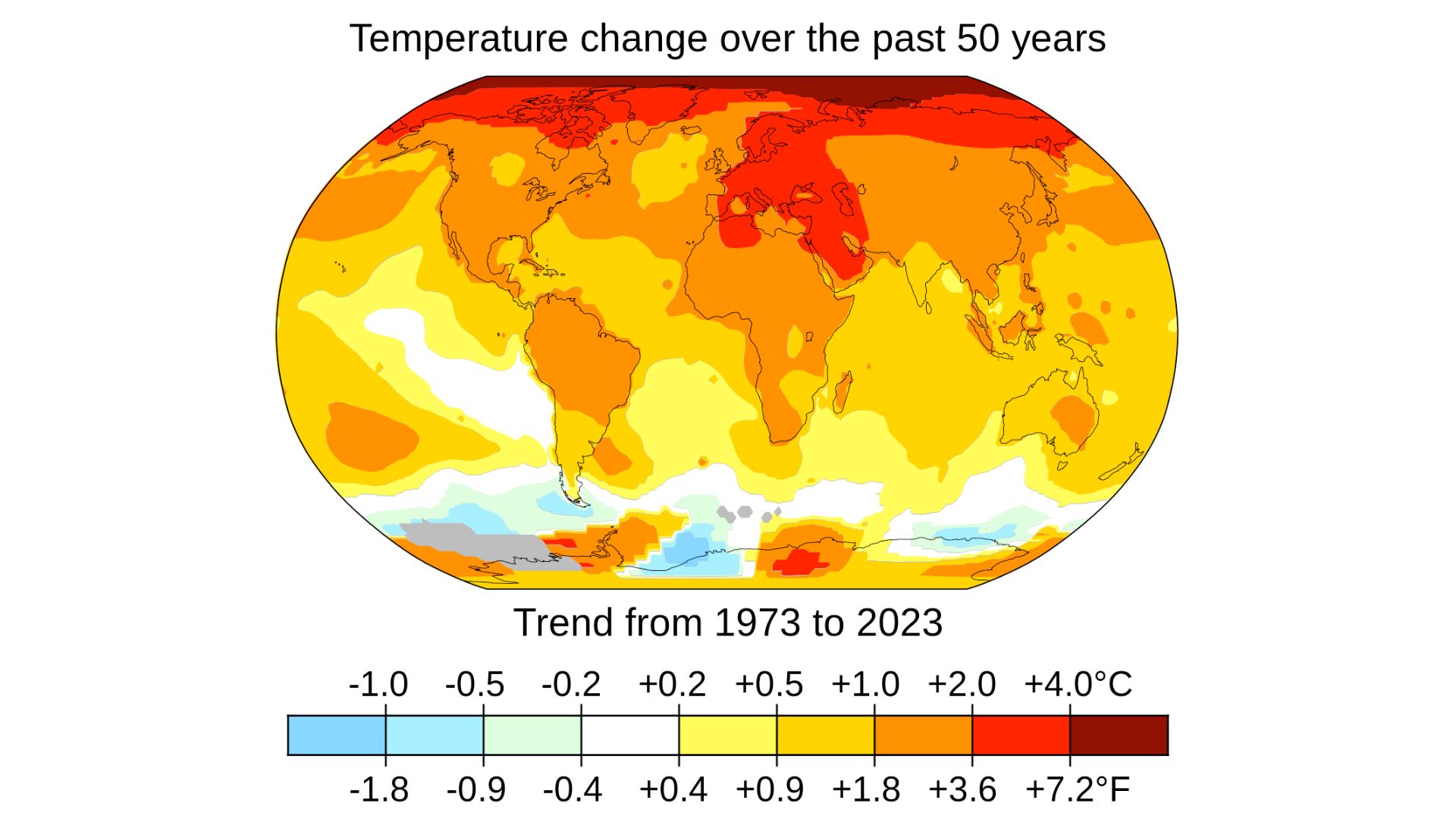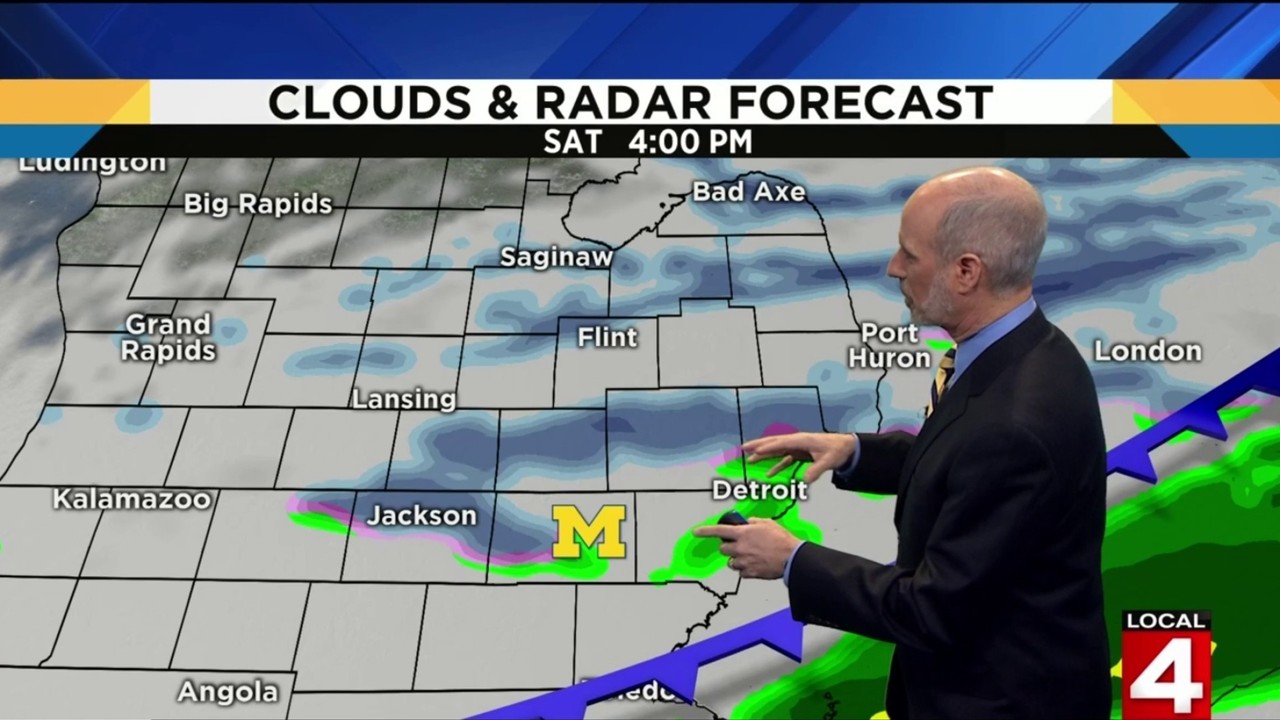Climate Whiplash: A Report On The Growing Threat To Urban Areas Globally

Table of Contents
The Causes of Climate Whiplash in Urban Environments
Climate change is the primary driver of climate whiplash. The increased concentration of greenhouse gases in the atmosphere is intensifying extreme weather events and making them less predictable. Rising global temperatures are fueling more frequent and intense heatwaves, while altered atmospheric circulation patterns contribute to erratic rainfall patterns, leading to both severe droughts and flash floods.
The urban heat island effect exacerbates this problem. Cities, with their vast expanses of concrete and asphalt, absorb and retain significantly more heat than surrounding rural areas, leading to higher temperatures and increased risk of heat-related illnesses. Furthermore, deforestation and urbanization disrupt natural water cycles. The removal of trees and vegetation reduces evapotranspiration, decreasing rainfall and increasing the risk of drought. Simultaneously, the increased impervious surfaces (roads, buildings) in urban areas hinder water infiltration, leading to increased runoff and a greater risk of flash flooding.
- Increased greenhouse gas emissions: The burning of fossil fuels is the primary contributor to climate change and the intensification of extreme weather events.
- Altered atmospheric circulation patterns: Shifting weather patterns are leading to more erratic rainfall distribution and increased frequency of extreme weather events.
- Loss of green spaces and increased impervious surfaces: Urban development reduces the city's ability to absorb rainwater and regulate temperature, exacerbating both drought and flood risks.
- Inefficient water management systems: Inadequate infrastructure and management practices can worsen the impacts of extreme rainfall events and exacerbate water scarcity during droughts.
Impacts of Climate Whiplash on Urban Infrastructure and Populations
Climate whiplash has severe consequences for urban infrastructure and populations. Extreme weather events can cause widespread damage to critical infrastructure, including power grids, transportation networks, and water systems. Power outages disrupt essential services, transportation networks become impassable, and water systems can be overwhelmed or contaminated, leading to shortages and health risks.
The impacts on public health are equally concerning. Heatwaves contribute to increased rates of heatstroke, while extreme rainfall events can lead to waterborne diseases and respiratory illnesses due to mold and mildew growth in damp environments. Furthermore, climate whiplash has significant socioeconomic consequences, including displacement of populations, economic losses, and food insecurity, disproportionately affecting vulnerable communities.
- Increased frequency of power outages: Extreme weather events damage power lines and substations, causing widespread disruptions.
- Damage to transportation networks and disruptions to commutes: Floods, landslides, and extreme heat can severely impact transportation, hindering access to essential services.
- Water contamination and shortages: Extreme rainfall can contaminate water supplies, while droughts lead to water scarcity.
- Strain on healthcare systems: Extreme weather events increase demand on healthcare systems, exacerbating existing resource constraints.
- Increased inequality and social vulnerability: The impacts of climate whiplash disproportionately affect low-income communities and marginalized populations.
Vulnerability and Adaptation Strategies for Urban Areas
Low-income communities, the elderly, and individuals with pre-existing health conditions are particularly vulnerable to the impacts of climate whiplash. Effective adaptation strategies are crucial to minimize these risks. This includes investing in resilient infrastructure, such as flood defenses and heat-resistant materials, as well as developing early warning systems for extreme weather events to allow for timely evacuations and preparedness measures.
Urban greening initiatives, including the planting of trees, the creation of green roofs and permeable pavements, play a significant role in mitigating the urban heat island effect and improving water management. Resilient urban planning and design are essential for creating cities that can withstand the impacts of climate whiplash. This includes incorporating nature-based solutions into urban development, improving water management systems, and diversifying infrastructure to reduce reliance on single points of failure.
- Investing in resilient infrastructure: Upgrading infrastructure to withstand extreme weather events is crucial for minimizing damage and ensuring continued functionality.
- Developing early warning systems for extreme weather events: Providing timely warnings allows for effective evacuation and preparedness measures, reducing casualties and damage.
- Implementing green infrastructure: Green infrastructure helps to mitigate the urban heat island effect and improve water management.
- Improving community preparedness and response: Educating communities on how to prepare for and respond to extreme weather events is crucial for minimizing the impact.
The Role of Policy and International Cooperation in Addressing Climate Whiplash
Addressing climate whiplash requires a multi-faceted approach involving national and international policies. Mitigation strategies, such as investing in renewable energy sources, implementing carbon pricing mechanisms, and strengthening building codes and standards, are critical to reducing greenhouse gas emissions and slowing the pace of climate change. Adaptation strategies, as discussed above, are equally important for building resilience to the unavoidable impacts of climate change.
International cooperation is essential for sharing best practices, providing financial support to vulnerable cities, and coordinating global efforts to mitigate climate change. Strengthening existing climate agreements, such as the Paris Agreement, and enhancing mechanisms for technology transfer and financial assistance to developing countries are crucial for effective global action.
- Investing in renewable energy sources: Transitioning to renewable energy is essential for reducing greenhouse gas emissions and mitigating climate change.
- Implementing carbon pricing mechanisms: Putting a price on carbon emissions incentivizes emissions reductions and fosters investment in cleaner technologies.
- Strengthening building codes and standards: Designing and constructing buildings to withstand extreme weather events is crucial for protecting lives and property.
- International collaboration on climate adaptation and finance: International cooperation is vital for sharing knowledge, resources, and best practices in adapting to climate change.
Conclusion
Climate whiplash poses a significant and growing threat to urban areas globally, impacting infrastructure, public health, and the economy. Addressing this challenge requires a concerted effort at all levels – individual, local, national, and international. By mitigating the causes of climate change through emissions reductions and adapting to its effects through resilient infrastructure, urban planning, and community preparedness, we can build more sustainable and resilient cities. Understanding and actively addressing the threat of climate whiplash is crucial for building sustainable and resilient urban futures. Let's work together to mitigate the causes and strengthen our cities' ability to withstand the increasingly unpredictable impacts of climate change, creating a future where climate whiplash is less devastating.

Featured Posts
-
 Cbs Announces Jennifer Lopez As Host For 2025 Amas
May 28, 2025
Cbs Announces Jennifer Lopez As Host For 2025 Amas
May 28, 2025 -
 High Level Office365 Intrusion Results In Multi Million Dollar Loss Federal Charges Filed
May 28, 2025
High Level Office365 Intrusion Results In Multi Million Dollar Loss Federal Charges Filed
May 28, 2025 -
 2025 American Music Awards Jennifer Lopez Confirmed As Host
May 28, 2025
2025 American Music Awards Jennifer Lopez Confirmed As Host
May 28, 2025 -
 Metro Detroit Weather Update Cool Monday Morning Sunny Afternoon
May 28, 2025
Metro Detroit Weather Update Cool Monday Morning Sunny Afternoon
May 28, 2025 -
 Waspada Maraknya Kawin Kontrak Di Bali Libatkan Warga Asing
May 28, 2025
Waspada Maraknya Kawin Kontrak Di Bali Libatkan Warga Asing
May 28, 2025
